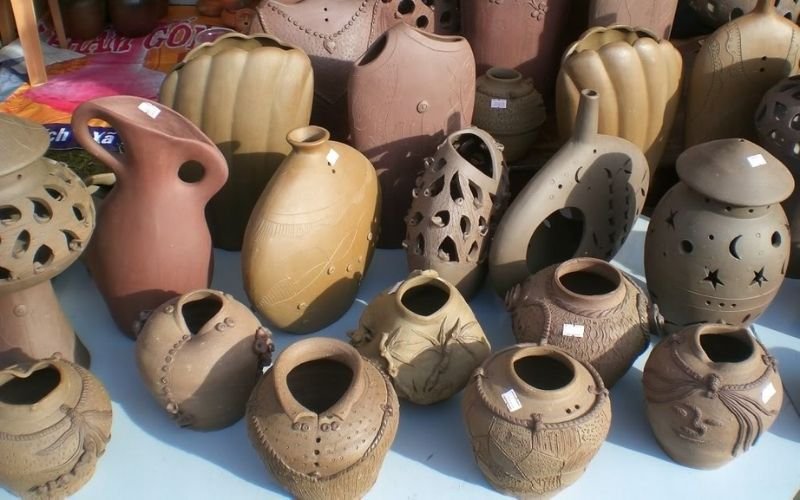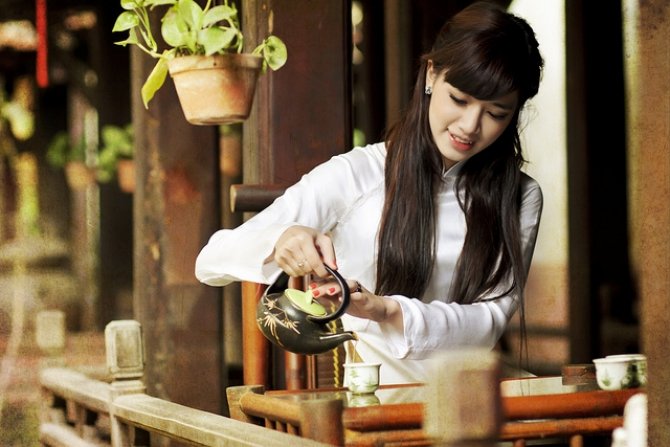Tin tức
Famous ceramics lines in Vietnam today
Ceramics is one of the familiar materials of Vietnamese people. Ceramics are increasingly popular because of their luxurious and delicate beauty and high assurance of health safety.
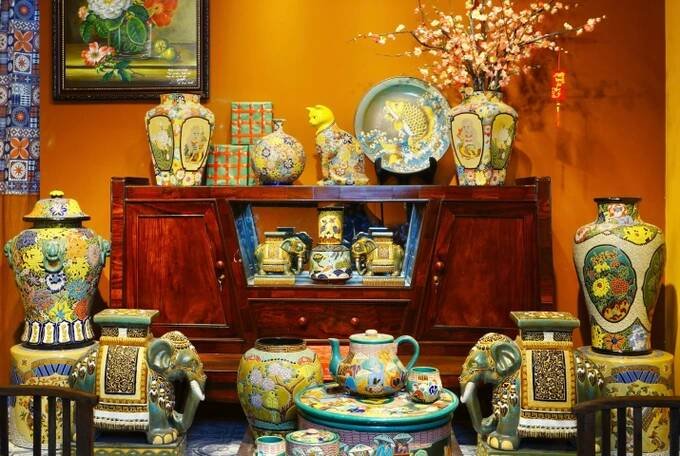
1, Bat Trang Ceramics (Ha Noi)
Bat Trang ceramics is one of the famous ceramics lines in Vietnam, both in terms of reputation and tradition until now. Bat Trang pottery village appeared around the 15th century, right next to the alluvial Red River. At that time, Bat Trang was a high mound near the side of the river. Very convenient for pottery making and transportation. Through many events, the ancient pottery village still holds firmly and develops. Today, Bat Trang pottery village is located in Bat Trang commune, Gia Lam district, Hanoi.
Determined not to let the ancestral property be overwhelmed by the flow of time, the people of Bat Trang pottery village have constantly learned and launched increasingly suitable and diverse product lines with the needs of the market. Over time, Bat Trang pottery still retains ancient glazes. The posing stage is all done by hand, so the ceramic bones are quite thick, sturdy, firmly held. The characteristic glaze usually turns ivory, opaque. Besides, there are also some unique yeast lines only available in Bat Trang such as green yeast, reef yeast.
On the one hand, focusing on the restoration of ancient feudal items, on the other hand, promoting the development of both quality and design, constantly reaching out and exporting to European and Asian countries. Bat Trang ceramics is currently the most sustainable brand and traditional craft village today.
2, Chu Dau Pottery (Hai Duong)
This is one of the earliest Vietnamese ceramics villages. Belongs to Thai Tan commune, Nam Sach district, Hai Duong. Chu Dau pottery was born in the 13th century and thrived since the 14th century, considered the most advanced ancient pottery in Vietnam. Unfortunately, in the 17th century, due to chaotic warfare, this pottery village was decayed and lost. Until 2001, Chu Dau pottery was researched and restored techniques, glazes and designs. Since then, he has gradually become strong and continues to write back the golden age for Chu Dau pottery village. Deeply influenced by Buddhist and Confucian values, it is not difficult to see the Buddhist imprint, Lao Tzu’s pen in the ceramic art of Chu Dau village. It can be said that this is the difference of potters here compared to artisans in other pottery villages.

The pottery here is made from white clay in Truc Hamlet in Chi Linh town, Hai Duong province. In order for the pottery to achieve pure clarity, the worker must take the clay and mix it in water and filter. Then came the pottery making process. Therefore, Chu Dau village pottery has a very clear white glaze. Blue pattern thanks to the use of indigo-white enamel. Red-brown, green-yellow pattern thanks to the use of triple enamel. The designs and motifs of the pattern are expressed through many forms such as drawing, engraving, painting, embossing, which are liberal and sincere.
3, Phu Lang Pottery (Bac Ninh)
Phu Lang pottery village is located in Que Vo district, Bac Ninh province. The process of formation and development together with Bat Trang village. But the products of Phu Lang pottery are mainly household appliances made from red clay and hand-shaped on turntables.

Phu Lang ceramics are brown, black-brown, light yellow, dark yellow ceramics… Folk or called eel skin enamel. It is this feature that makes Phu Lang different from other Vietnamese ceramics villages. Besides, the way potters make pottery is also very characteristic. They use the embossing method in the form of a ball touch. Natural enamel color, color fastness, uniqueness. The design is rustic, strong, very rich in indigenous culture.
4, Thanh Ha Ceramics (Hoi An City, Quang Nam)
As a familiar name in the hearts of Vietnamese people, “Thanh Ha Ceramics” is not only famous for its beautiful enamel color but also for the lightness of its products. Born late compared to Phu Lang, with an age of about 500 years, Thanh Ha pottery village located in Hoi An is still famous for its durable terracotta ceramic products. With local raw materials, workers take brown clay along Thu Bon River as the main material. This type of brown clay has high plasticity and adhesiveness.
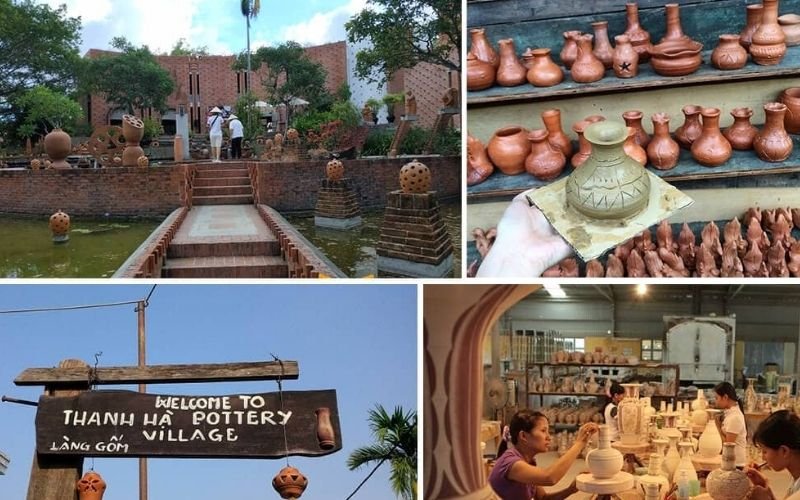
Compared to similar items from other localities and brands, Thanh Ha ceramics are gently held differently. The special thing of this product line is that it is made up of brown clay along Thu Bon River, flexible and extremely adhesive. This craft village often makes familiar items in daily life such as dishes, potted plants,.. should quickly become a familiar choice of Vietnamese consumers. The special thing of this product line is that it is made up of brown clay along Thu Bon River, flexible and extremely adhesive. Most of the products of Thanh Ha pottery village give a dark orange color, light reddish brown color and porous ceramic bones. The products are created with molds and engraved decorations.
5, Bau Truc Ceramics (Binh Thuan)
Bau Truc Pottery Village is a Cham ceramics village and is one of the oldest in Southeast Asia. Cham pottery once reached the peak of pottery culture. Not a few excavated relics prove it. As an exclusive style brand of Champa, Bau Truc pottery village is still not lost by the trends of the times. Still choose to retain traditional colors such as red gold, pink red, brown streaks ,.. Combined with patterns with village nuances such as stork wings, cauldron wings, rivers, Bau Truc ceramics is the choice for people who love nostalgia and meticulous craftsmanship. Bau Truc ceramics are highly appreciated for their simplicity, lightness and rusticism in designs.
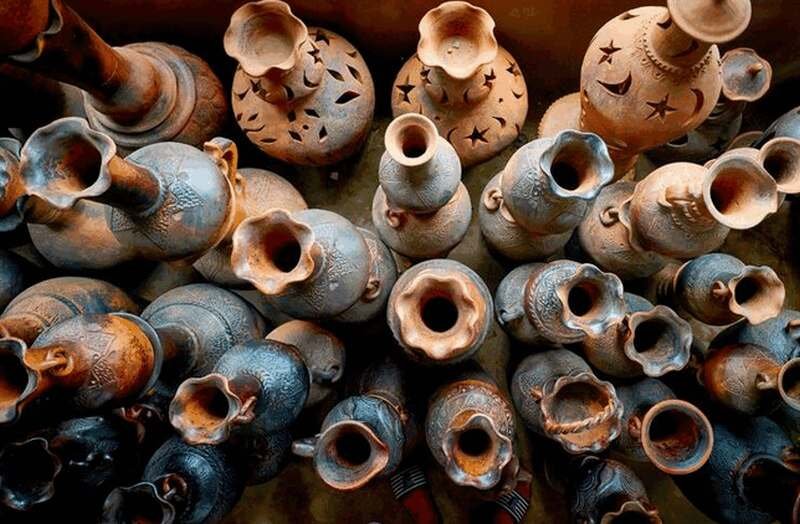
Bau Truc pottery is not covered with glaze and is imbued with indigenous culture. Carved patterns are river markings, shell dots, rustic, familiar nail patterns. Ceramic products have an earthy bone color and are uneven. Because in the process of firing fire, there is a lot of burning. Besides, Bau Truc pottery is not fired in a kiln but fired outdoors by wood and straw from 700 to 900 degrees Celsius.
6, Binh Duong pottery
Lai Thieu Pottery Village – Tan Phuoc Khanh – Thu Dau Mot (Binh Duong) appeared inheriting the quintessence of Cay Mai pottery at the end of the 19th century. Thanks to the abundant source of kaolin clay and abundant firewood materials, a ceramics village was formed. Today, however, Lai Thieu Pottery no longer exists. Instead, there are developments according to industrial scale and market trends. Therefore, the old vestiges of Lai Thieu pottery village are almost gone. At the flourishing of Lai Thieu pottery, all products were handmade and fired using traditional wood kilns. The traces left behind only show that Lai Thieu pottery mainly serves daily life in the Southeast region.
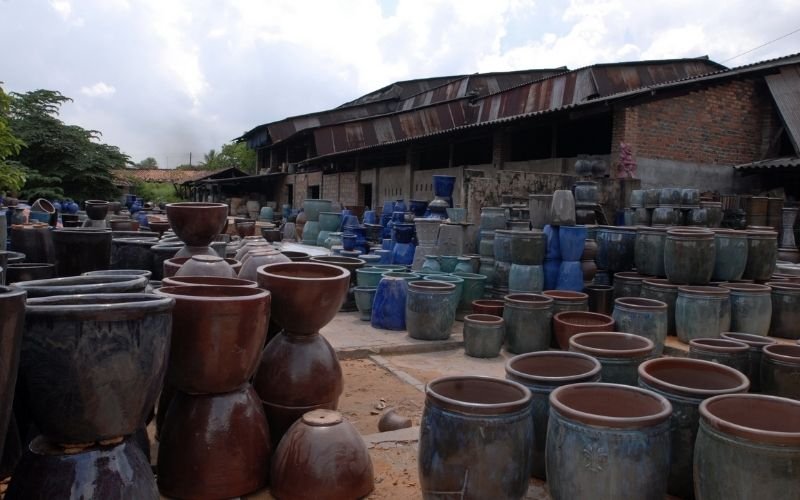
Considered as a cluster of pottery villages, many big brands from other countries also compete to build and set up factories in Binh Duong, Lai Thieu – Tan Phuoc Khanh – Thu Dau Mot pottery villages are also gradually asserting their name. With the goal of serving domestic consumers, constantly improving skills to advance the dream of exporting to foreign countries, Binh Duong pottery village is gradually transforming strongly, both helping the country develop and not losing the traditional cultural values of the ancient ancestors.
7, Bien Hoa Pottery (Dong Nai)
There is an opinion that pottery in Bien Hoa dates back to the time when Vietnamese people from Thuan Quang came to reclaim the Southern industry and brought the traditional craft of their homeland to produce for life. The traces of pottery kilns established by the Chinese people are also clearly visible in the Lo Pottery canal in Pho islet, also known as Mieng Gong wharf. There is an opinion that pottery in Bien Hoa dates back to the seventeenth century, when Guangdong residents led by Chen Shangchuan settled in Pu Island in 1679.
The school’s ceramic products are increasingly famous both at home and abroad, awarded medals by the French Government when attending the Paris International Fair in 1925 and shaping Bien Hoa pottery, different from other long-standing ceramic lines such as Cay Mai pottery, Lai Thieu pottery … Bien Hoa pottery is made from kaolin and colored clay. The main products are pots, elephants, animals or statues. Unlike other villages in the Red River Delta, Bien Hoa pottery village is famous for its engraving, glaze painting combined with glaze colors to create a unique and sophisticated product.

Moreover, Bien Hoa pottery is porous, with ivory earth bones. Potters do not fire with high temperatures like other Vietnamese ceramics villages. They only fired lightly on the fire so that the ceramic color remained as pristine as it looked. At the end of the 18th century when Pho Island was destroyed, some potters fled to Cho Lon to produce Cay Mai pottery, some went through Tan Van to establish Tan Van pottery village.
8, Tan Van Ceramics (Ho Chi Minh City)
When Pho Island was destroyed (1777-1778), the pottery in Bien Hoa was destroyed, some potters ran to Cho Lon to produce Cay Mai pottery, some went to Tan Van to establish Tan Van pottery village.
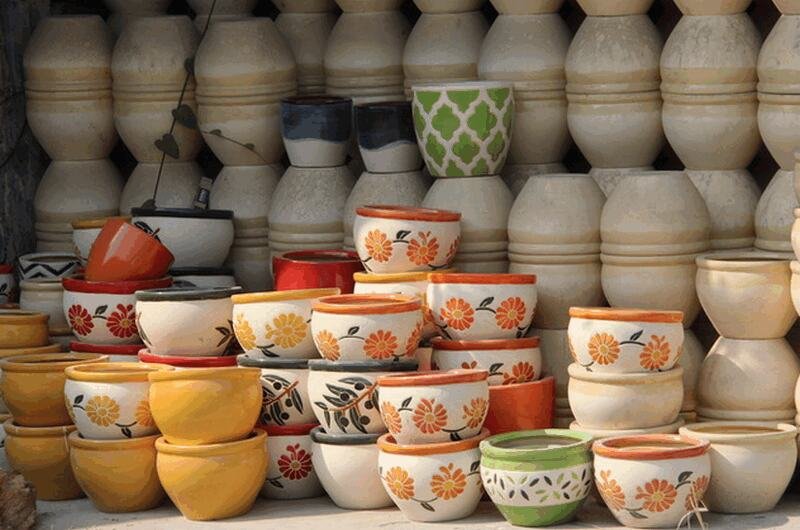
Located in the east of Ho Chi Minh City, Tan Van pottery village is nearly 300 years old. The ages have passed down many lifetimes, yet the artisans here still persevere with the earth, the fire, constantly learning and creating new ones based on the quintessence of ancient ceramics. Although they have undergone many relocations, the artisans here are constantly trying to continue to maintain the organization, creating a foothold for their brand in the domestic and international markets.
9, Cay Mai Pottery (Ho Chi Minh City)
Cay Mai pottery emerged in the Saigon – Cho Lon region in the early 19th century. This is a line of fine art ceramics made and developed by Cho Lon Chinese artisans with the explorations of history to this day. Based on its roots, researchers also call Cay Mai pottery Saigon pottery to distinguish it from other Vietnamese pottery villages. The pottery village has a variety of products and has its own characteristics.
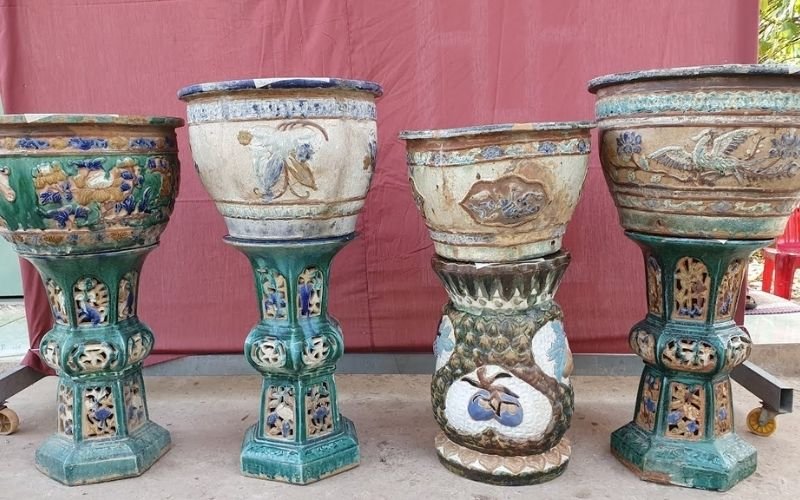
They have a combination of outstanding colors such as: cobalt, moss green, eel brown. Bring sophistication in each product. So far, Cay Apricot pottery has ceased to exist. However, you can still see them on the walls of some pagodas of District 5 and District 6.
10, Vinh Long Red Ceramic
Vinh Long pottery village is located along the bank of Co Chien River. With thousands of brick kilns, pottery kilns crowded together like mushrooms after rain, stretching for tens of kilometers. The alluvial flows that gather in Vinh Long contribute to the formation of precious clay deposits here. Do not follow the path of ceramics with luxurious shiny glazes. Vinh Long red pottery village still retains its centuries-old tradition. Focusing on imitation antique ceramic products, glaze decorative ceramics, red baked ceramics, Vinh Long pottery is chosen by professionals and traditional color lovers.
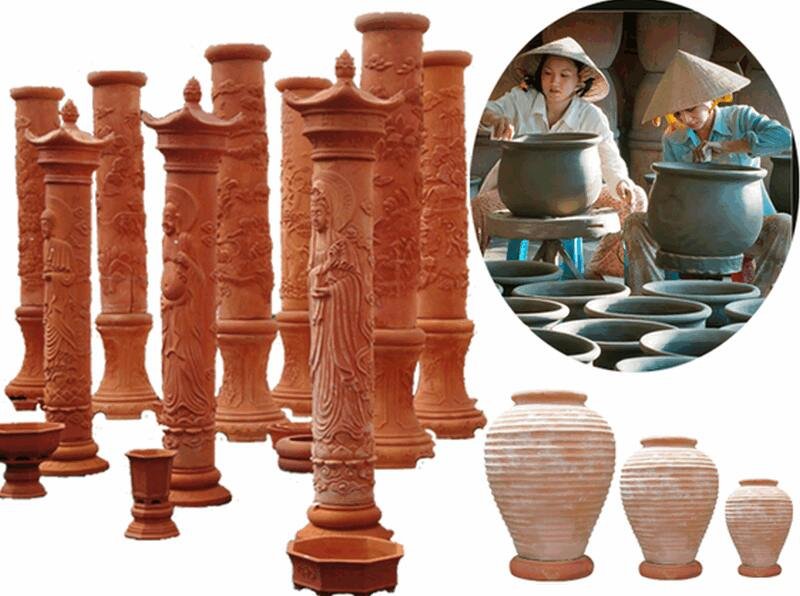
Taking advantage of local advantages, Vinh Long pottery has the main raw material is red clay. With alum-contaminated properties, when fired, Vinh Long pottery often appears white veins. In addition, Vinh Long soil only blocks at 900 degrees Celsius. These characteristics have created a very unique feature for the craft village here. The main products of the pottery village are household items such as pots, jars, splashes, spits. For the purpose of serving for life and some types are worth exporting.
11, Go Gong Pottery (An Nhon Town, Binh Dinh)
Also a pottery village in the ancient Champa style, Binh Dinh pottery village has a relatively large scale, a variety of products, delicate designs and quality. At the same time, Go Gong Pottery’s products are highly appreciated on par with Champa ceramic products crafted in famous pottery workshops of China and Thailand. It can be said that the excavation and research of Cham pottery is considered a remarkable achievement of Vietnamese archaeology. From these research achievements, Go Gong pottery or by extension Binh Dinh ancient pottery has enriched the perception of pottery in the world.
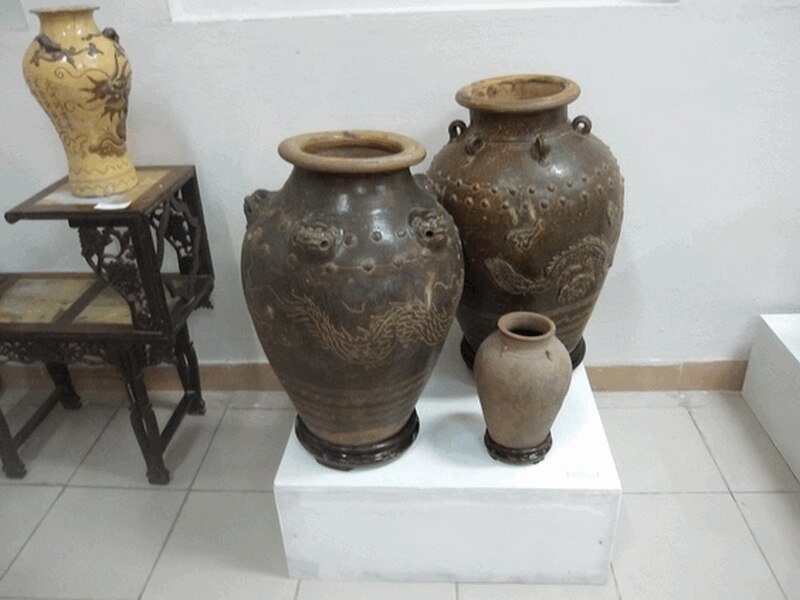
12, Phuoc Tich Pottery Village (Thua Thien – Hue)
The main raw materials to create ceramic products in Phuoc Tich pottery village are from dark gray clay, quite flexible and sticky. This craft village mainly produces household ceramics such as lugs, pots, earthen pots, kettles … With simple patterns, idyllic patterns. The pottery making method of Phuoc Tich workers is very rudimentary such as embroidery, earth masonry, broaching tables, turntables completely by hand and shaping completely by hand. Kilns are mainly used as drying and facing furnaces. Phuoc Tich pottery has long been a craft village serving the Royal Family of the Nguyen Dynasty. But over time has gradually declined. Currently, the authorities are making efforts to restore Phuoc Tich craft village towards handicraft production, but there have been no positive results.
